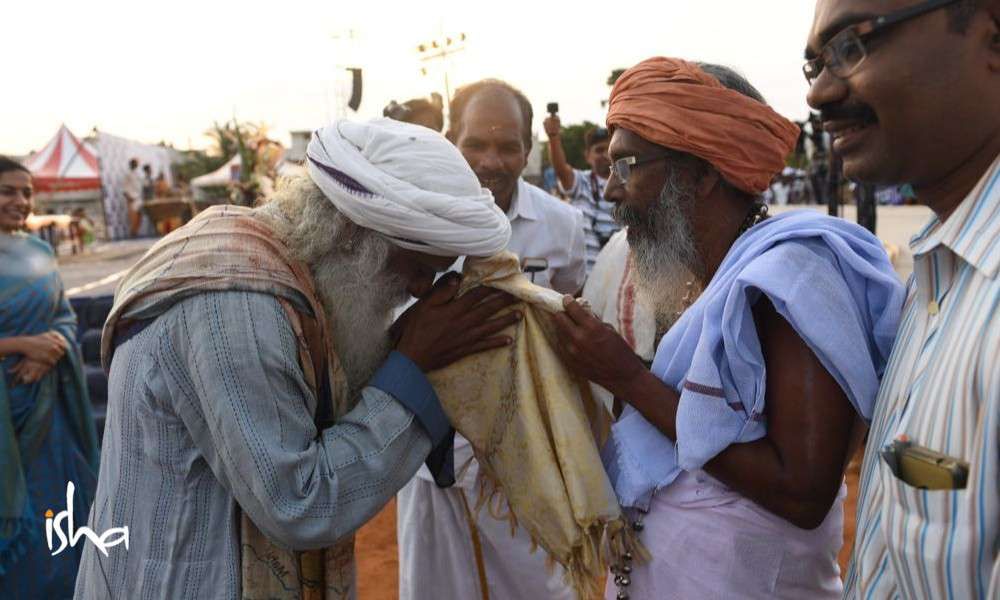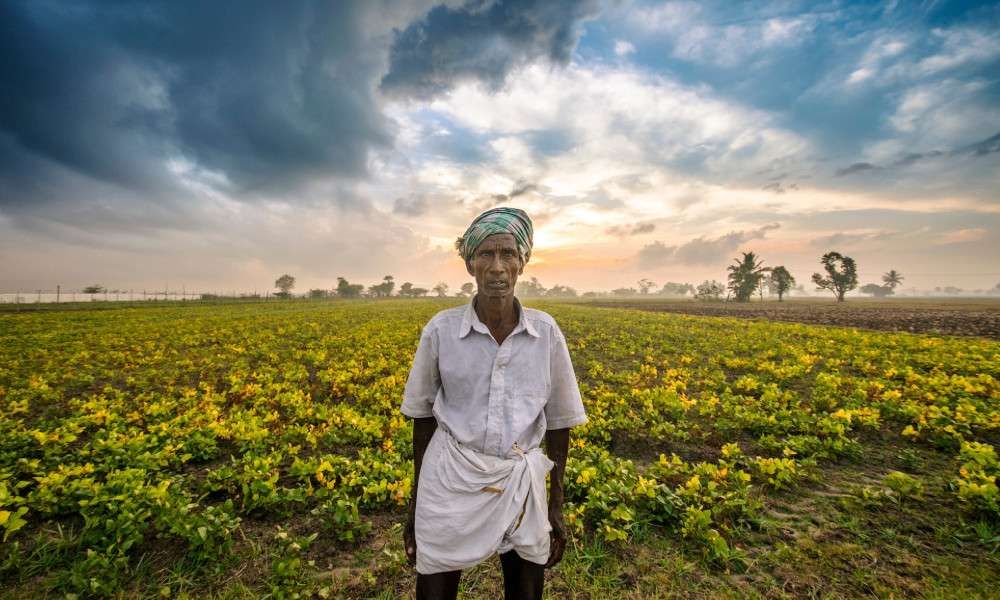Farmers Can Save Tamil Nadu From Drought
Sadhguru explains how rivers are not the source of water in India and how our monsoon water is running away because there is no vegetation to hold it. Agroforestry is the ultimate solution because it is both ecologically effective and economically lucrative.

This cycle of alternating drought and flood is a classic case of how we have not paid attention to managing water. Water is a resource that needs to be managed. But we think about water only when we run out of it. No resource is an assured resource unless we manage it well.
Rivers Should Walk, Not Run
Everyone thinks rivers, ponds and wells are the source of water. They are not the source of water; they are the destination for the water. In this country, our only source of water is the rain from the monsoon, except for about 4% that comes from glacial melt. The remaining 96% comes from the monsoon that pours down in 50-60 days. We are supposed to hold all this water for the entire 365 days of the year.
Right now, we are trying to hold this water with dams, which is not working. Almost 20% of our dams are silt-ridden. Artificial methods will not work in the long-term. The only sustainable way to hold water is by putting enough vegetation on the land. If the soil is rich with organic matter from plant and animal waste, it will retain the water, which trickles down to groundwater and then into the river.
Subscribe
So a river is not a source of water, it is the destination. How slowly it reaches the destination will determine how many days of the year we will have water in the river. Right now, there is not enough vegetation, so the rain water runs off into the river too quickly, which floods.
There is a very beautiful saying in Tamil about Cauvery: “Only if Cauvery comes walking, she is prosperity. If she comes running, she is a disaster.” You can make her walk only if there is substantial vegetation in the catchment. Catchment does not mean just the one valley where the river arises. Every square inch of land in a tropical climate is catchment. Wherever you have trees, water will percolate into the soil. If there are no trees, the water will runoff.
From Knee-Jerk Reactions to Long-Term Solutions
The studies say that if there are 10,000 trees in an area, 38 million liters of water will enter the soil. The Cauvery basin is 83,000 sq km in area and we have taken off 87% of the tree cover. Imagine how much water we are losing! Water scarcity is not something we should be looking at only in summer. Just watch how much water is running away post-monsoon. We must be alarmed right then. Unfortunately, we wake up only when we don't have water to drink.
Take the example of Chennai. At one time, they say there were over 1500 lakes and ponds in Chennai. You don't find any of them anymore. This is because we have developed cities irresponsibly without understanding how the natural water flows.
Now we are taking action through knee-jerk reactions. You see a lot of people talking about deepening the lakes and ponds. This is not just in Tamil Nadu, it is happening everywhere. These things need to be done, but if we don’t look at the fundamentals, such action will not work for long.
The lakes had feeder streams that fed them water throughout the year. All of those feeder lines are gone now because we have built homes and buildings over them. If you just deepen a lake, water will come in during the monsoon, but it will not flow the rest of the year.
A city of 7 million people depending on just two large lakes is not sustainable. We have to ensure that groundwater comes up. That will happen only if monsoon waters trickle down into the soil. There is no other way. For short-term we can build check dams and use the contours of the land to make water trickle down, but fundamentally, it is vegetation – grasses, bushes and trees native to the land – that is needed.
Agroforestry – The Way Forward

Does that mean we have to bring back forests everywhere? That is simply not possible. The only way forward is agroforestry. If we encourage farmers to shift to organic tree-based agriculture, the organic material from the animals and trees will continuously replenish the soil.
Shifting to tree-based agriculture not only replenishes the river and soil, it can also increase a farmer’s income by three to eight times. If large-scale demonstrations of tree-based agriculture are created that clearly show how farmers’ incomes can increase, farmers across the country will naturally want to take to it.
This is why we are launching a campaign called “Cauvery Calling.” We are focusing on revitalizing Cauvery. We want to show the world that in ten to twelve years’ time, you can actually revive a river significantly, and at the same time, multiply farmers’ income. The most important thing is that this is not ecology versus economy. Reviving ecology can be very lucrative for the land owner. This is what we are trying to bring about.
Editor’s Note: Cauvery Calling is a campaign to support farmers in planting 242 crore trees and save Cauvery. This will increase water retention in the basin, while improving the income of farmers five-fold. Contribute to plant trees. Visit: CauveryCalling.Org or call 80009 80009. #CauveryCalling


